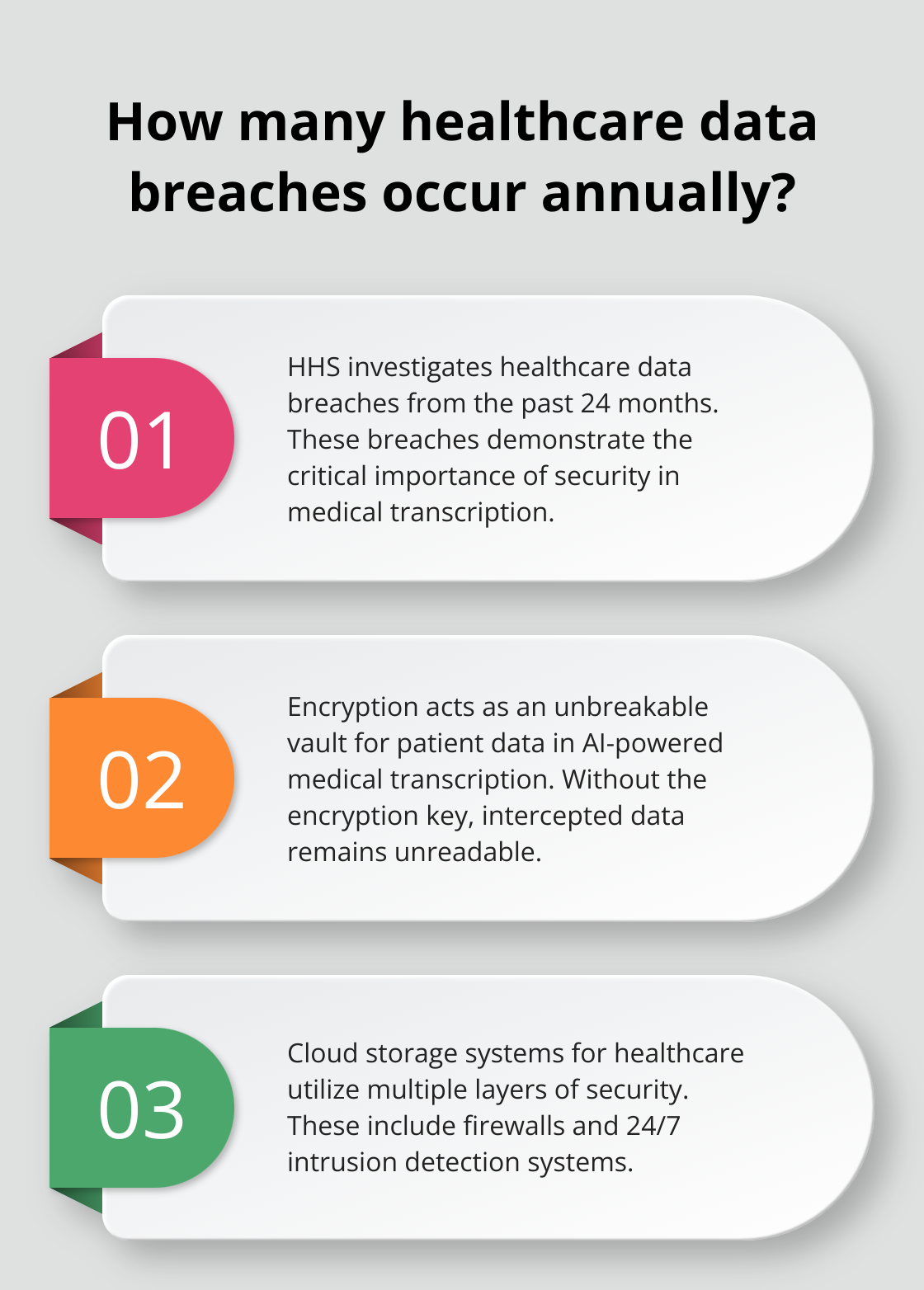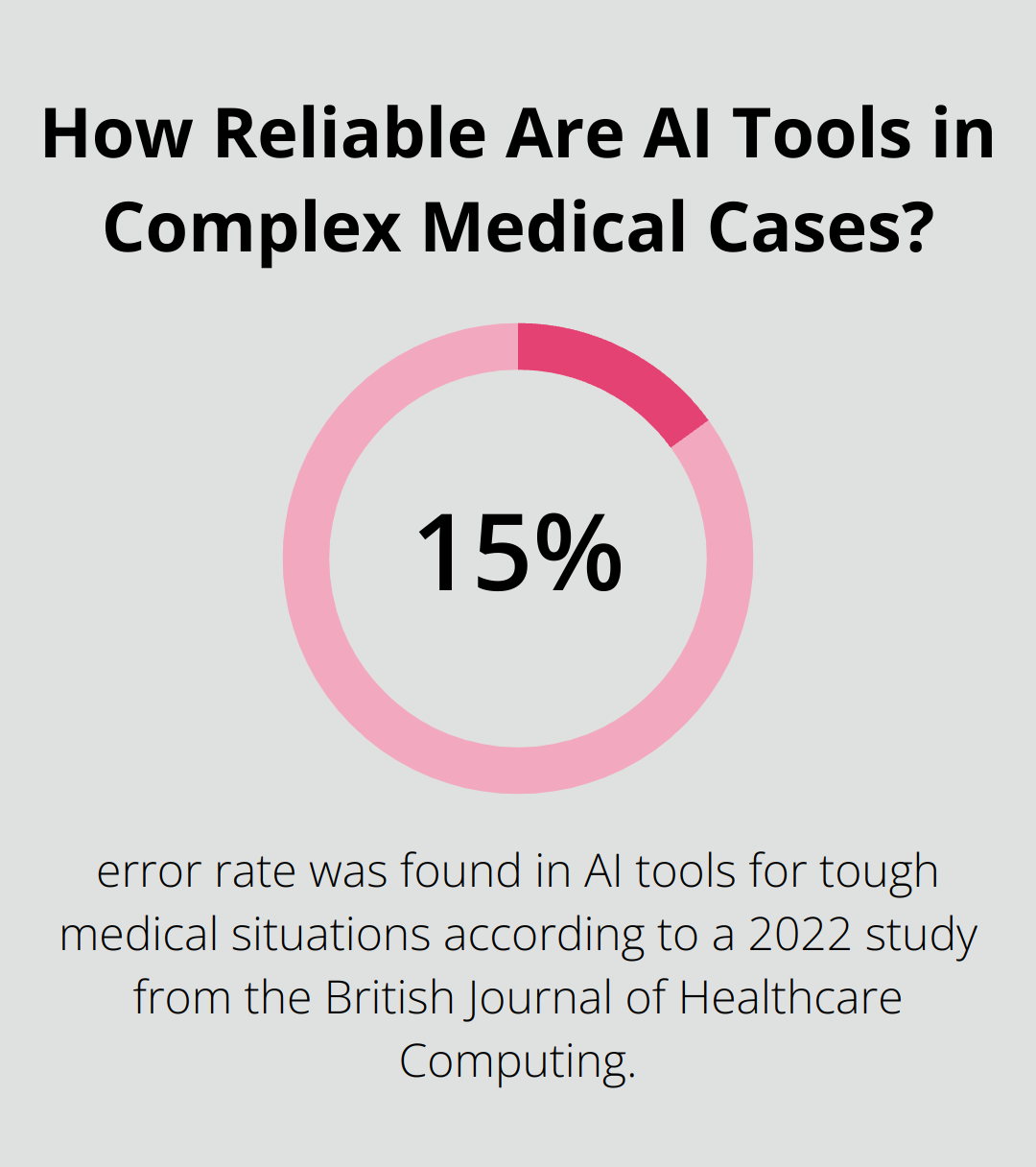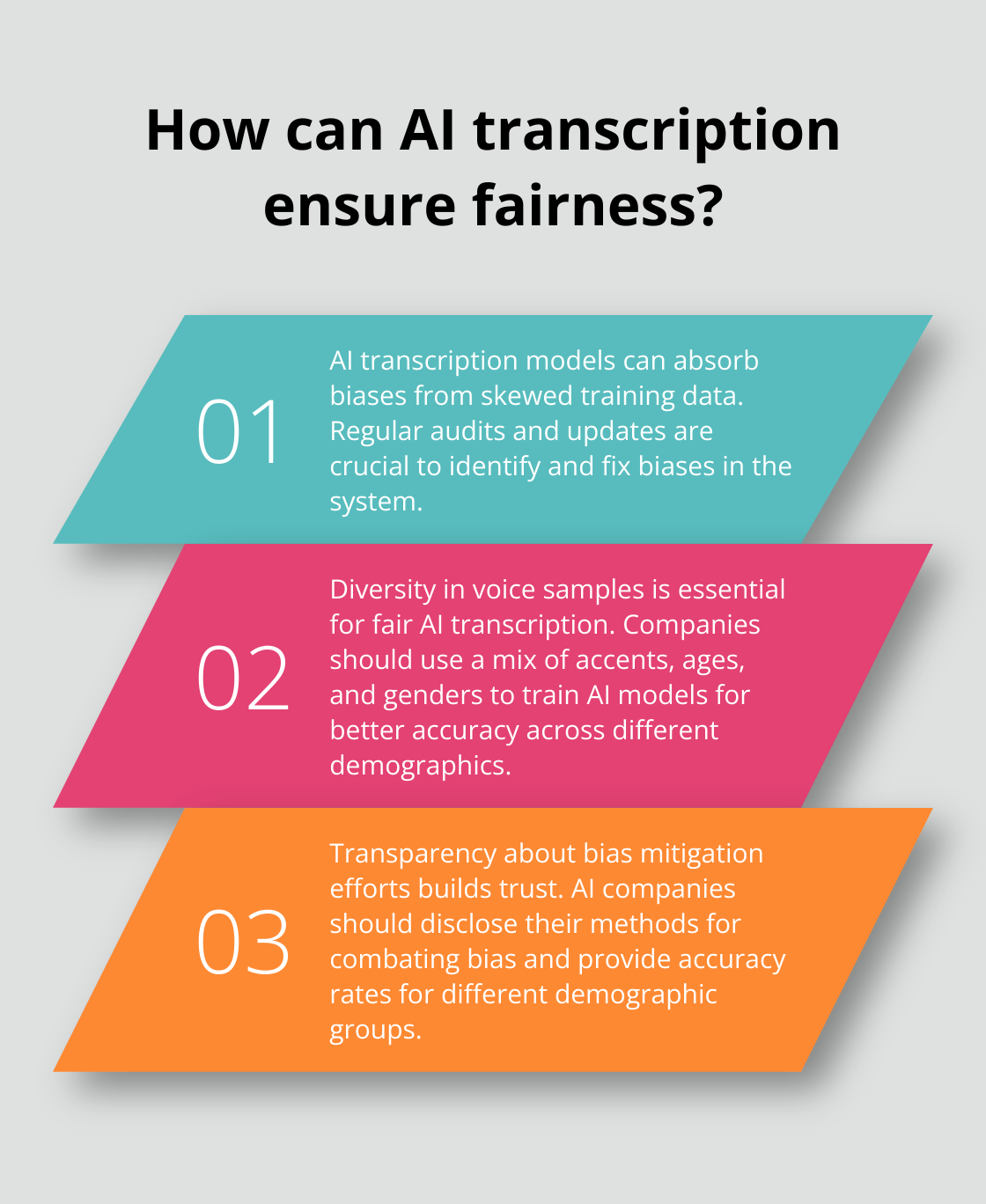So, ScriberJoy is diving headfirst into the brave new world of AI-powered medical transcription. As this stuff moves forward (and it will), we’ve gotta talk about the big, hairy ethical elephants in the room that are stomping all over healthcare.
Transcription ethics in these AI systems—yeah, we’re talking patient privacy, data security, accuracy, fairness… the whole shebang. This post is your ticket to exploring these crucial considerations. Why does it matter? Well, because these issues are playing a starring role in the future of medical documentation.
Safeguarding Patient Data in AI Transcription
Encryption: The Digital Fortress
Let’s talk encryption, folks-it’s the unbreakable vault for patient data in AI-powered medical transcription services. Imagine this: Even if some crafty devil gets their hands on the data, without the encryption key, it’s like trying to read a novel in hieroglyphics… good luck with that.
Secure Storage: Beyond the Digital Filing Cabinet
Think of cloud storage systems for healthcare as Fort Knox with Wi-Fi. We’re talking layers-multiple layers-of security, like firewalls playing defense and intrusion detection systems on high alert, 24/7. It’s not just about stashing data; it’s about babysitting it round the clock.
Access Control: The Gatekeeper’s Role
Access control-this is where the rubber meets the road. It’s all about who gets in and who stays out, minimizing those pesky internal breaches. Every time someone tries to log in, it leaves a trail like breadcrumbs in a fairy tale, for top-notch monitoring.
HIPAA Compliance: The Non-Negotiable Standard
HIPAA compliance-it’s the gospel truth of medical transcription ethics. AI systems need to live and breathe these regulations. We’re talking audits, training the team on the privacy playbook, and writing the rulebook for handling patient info.
The Stakes: High and Rising
Check this out-the U.S. Department of Health and Human Services keeps a hit list of breaches from the past 24 months under investigation. This stuff shows why we can’t skimp on security in medical transcription.

These measures aren’t just technical mumbo jumbo-they’re the backbone of trust between patients and the mighty healthcare system. As AI brings its A-game to medical transcription, safeguarding trust with rigorous data protection, that’s the name of the game.
The next chapter? We’ll dive into how AI transcription juggles accuracy with accountability, ensuring automation does its thing without cutting corners on quality or reliability. Stay tuned.
How Accurate is AI Medical Transcription?
The Current State of AI Accuracy
AI in medical transcription? Yeah, it’s a big deal – leaps and bounds in the accuracy department. Impressive? Sure. But we’re not out of the woods just yet. There’s still that pesky margin of error lurking around… and it’s not something you want in critical healthcare documentation.
The Human Touch in AI Transcription
Here’s the kicker – even a teeny tiny error can spell disaster in medical settings. So, what’s the solution? Hybrid vigor, my friends. Marrying AI smarts with human intuition. Enter the medical transcriptionist (fancy title, yes) who steps in when AI just doesn’t cut it. They catch those nuances that fly right past the machine’s radar.

This tag-team approach? It cranks up accuracy big time. Take this study from the British Journal of Healthcare Computing back in 2022. They found AI tools had a cringe-worthy 15% error rate in tough medical situations. Precision here isn’t just a bonus – it’s essential. For the integrity of medical records… and for keeping patients safe.
Error Correction and Quality Assurance
Let’s talk quality assurance. It’s not just about dotting i’s and crossing t’s. It’s understanding medical lingo, context, and the ripple effect of errors on patient care. The process? Oh, it’s no walk in the park:
- AI spits out a transcript
- A human gives it the once-over
- Another round of quality checks
- The final thumbs-up from a senior transcriptionist
This thorough dance catches mistakes before they boomerang back on clinical decisions or patient outcomes. Safety nets galore.
Legal and Professional Liability
The stakes in this game? Sky-high. Mess up medical documentation, and you’re looking at misdiagnoses, wrong treatments, and a mountain of legal woes. A 2011 AHIMA brief dives deep into how organizations can keep records in shipshape to meet present and future legal demands.
Talking safeguards, many services (think: ScriberJoy and pals) have professional liability insurance. They offer audit trails – like breadcrumbs you can follow to verify document accuracy.
Plus, AI models get regular updates with cutting-edge medical terms and guidelines – a must to dodge outdated or wrong info sneaking into records.
Looking ahead, it’s key to eye how AI transcription services iron out bias and promote fairness in medical docs. It’s not just about keeping up… it’s about setting ethical standards in healthcare tech. So, yeah – let’s keep that conversation front and center.
How Can AI Transcription Avoid Bias?
The Hidden Dangers of Biased Data
So, AI-powered medical transcription is shaking up healthcare documentation… but not without a snag or two. Bias-yep, it’s like that unwelcome house guest that just won’t leave. AI models are basically sponges, soaking up whatever data they’re given. Feed ’em skewed data, expect skewed output. And in medical transcription, that’s a recipe for disaster.

Sure, studies tell us AI boosts accuracy and efficiency in clinical docs. Slap on some better regulatory frameworks and we’re golden. But hey, let’s not pop the champagne just yet-bias is still rainin’ on our parade.
Diversity: The Foundation of Fairer AI
Diversity, folks. This is where it all begins. Those AI companies need to grab a cornucopia of voice samples. We’re talkin’ a mix of accents, ages, genders, you name it. Ethical? Yes. Essential? Absolutely. If AI’s gonna do its job for everyone, it’s gotta start here.
Some smart cookies are already using diverse voice soups for training their AI. The result? Transcriptions that nail it across a wide range of voices. It’s not just a moral high ground; it’s good business sense.
Keeping AI in Check
But hold up, diversity’s only the kickoff. Regular audits-like frequent check-ups-are crucial for nabbing and fixing any bias that sneaks in. Those audits gotta dive into how accurate transcriptions are, demographically speaking. Find a gap? Get on it pronto.
And let’s not forget, AI needs those updates, like a phone keeps needing software updates. Medical words and language morph nonstop, and AI’s gotta keep up.
Transparency Builds Trust
Now, let’s talk transparency. Another cornerstone in fighting bias. AI companies should spill the beans about how they’re battling bias and cough up accuracy rates for different groups. This kind of honesty builds trust-with docs and patients alike.
The journey to fair, unbiased AI transcription is not just tech-it’s human. We need diverse teams on the mission, always on guard, pushing for fairness in healthcare. As AI strides forward in medical transcription, keeping these goals on the front burner ensures this tech powerhouse works for every patient, equally.
Final Thoughts
AI-powered medical transcription… it’s got huge potential, but let’s not kid ourselves, the ethical challenges are no joke. Balancing innovation with rock-solid standards of patient privacy, data security, accuracy, and fairness? That’s the needle we’ve gotta thread. The future of ethical AI in healthcare – it’s all about staying sharp and working together. Healthcare pros, AI geeks, and the policy wonks need to roll up their sleeves and hammer out the responsible frameworks.

At ScriberJoy, we totally get how crucial these ethical angles are in medical transcription. Our AI-powered medical transcription service isn’t just high-tech; it’s backed by human verification to nail down accuracy and keep things HIPAA-tight. We’re pushing the envelope in medical documentation while keeping ethics front and center.
The ethical use of AI in medical transcription – it’s not just a box to tick. It’s gotta happen. As we keep pushing forward, let’s make sure our tech serves patients and healthcare pros, full stop. This ethics-first approach? It’s gonna shape the future of healthcare documentation and take patient care up a few notches for years to come.

Leave a Reply
You must be logged in to post a comment.